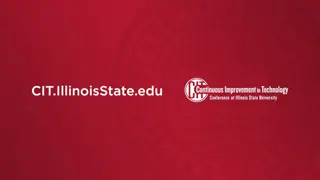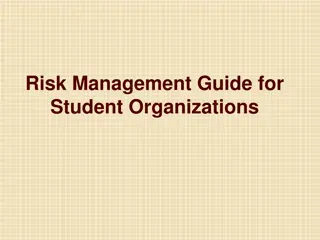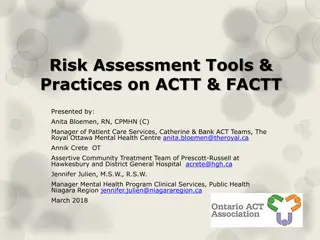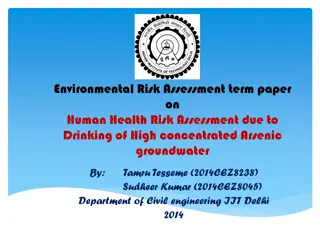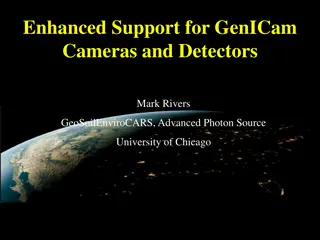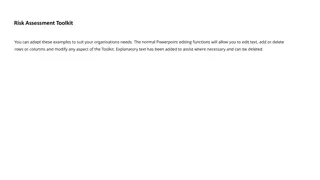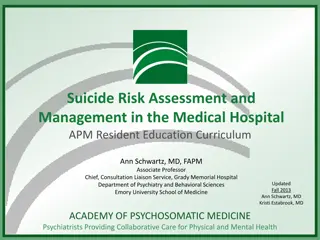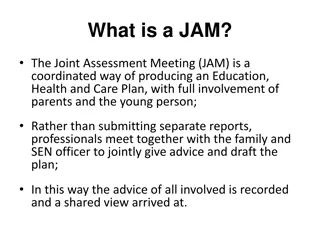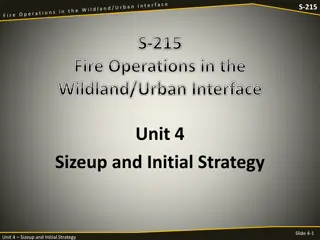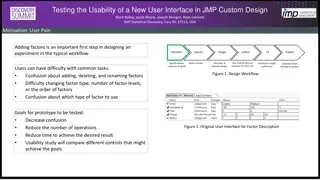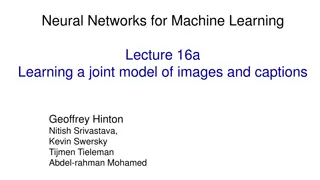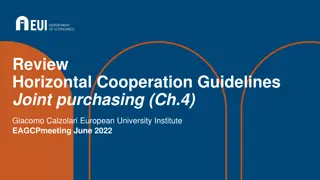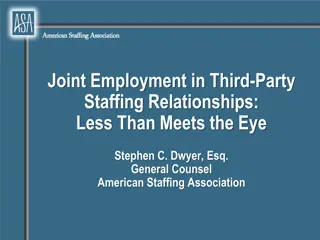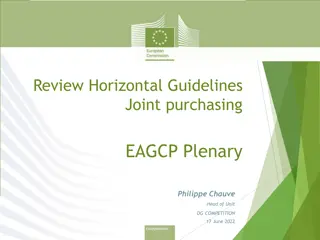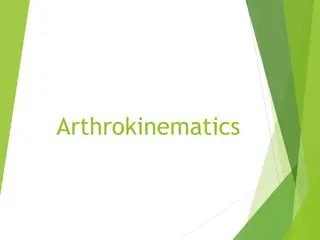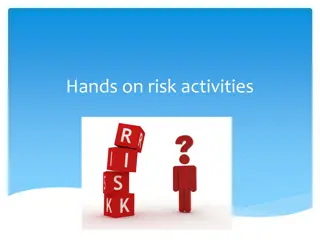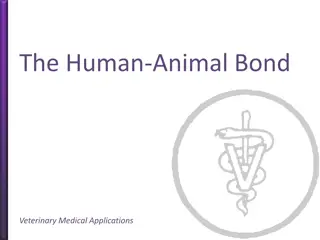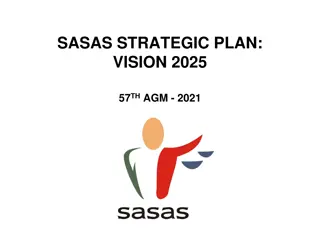Comprehensive Guide to Joint Risk Assessment at the Human-Animal-Environment Interface
This detailed guide provides essential information on conducting Joint Risk Assessment (JRA) at the human-animal-environment interface. Covering modules, roles, responsibilities, important notes, and steps involved in the JRA process, it emphasizes the significance of sector-specific assessments and the utilization of the JRA document for effective risk evaluation.
- Risk Assessment
- Human-Animal-Environment Interface
- JRA Process
- Roles and Responsibilities
- Sector-Specific Assessments
Uploaded on Sep 13, 2024 | 0 Views
Download Presentation

Please find below an Image/Link to download the presentation.
The content on the website is provided AS IS for your information and personal use only. It may not be sold, licensed, or shared on other websites without obtaining consent from the author. Download presentation by click this link. If you encounter any issues during the download, it is possible that the publisher has removed the file from their server.
E N D
Presentation Transcript
Joint Risk Assessment at the Human-Animal-Environment Interface MODULE 1
JRA modules & steps You are here 3
Roles & responsibilities Module 1 4
Important notes Key points and tips are highlighted in boxes throughout the JRA OT Definitions and language were developed for the purpose of the JRA only Agreed upon by experts from different backgrounds (Rome 2017) The language is a compromise between being clear and simple JRA only assesses risks at the animal-human-environment interface For sector-specific questions/problems, do sector-specific assessments Always use the JRA OT document 5
Roles and responsibilities in JRA process Figure 4: Tasks and flow, p. 9 6
Setting up the JRA Figure 5: JRA organisational structure, p. 13 7
Step 1: JRA steering committee p. 14-15; see also Annex A for model ToRs, p. 54-56 Working with existing structures, mechanisms, and objectives: Define the scope and timeline of the JRA process Review and interpret the results of the risk assessment Responsible for management and communications decisions Does not engage in technical aspects Ensures technical team is not influenced by policy considerations This step is always recommended, but may be skipped in urgent situations 8
Step 2: JRA lead p. 16-17; see also Annex B for model ToRs, p. 57-58 Designated by JRA steering committee Responsible to and participates in steering committee Authority/autonomy and scope of activities determined by JRA steering committee In charge of set up and implementation of JRA process Manages and leads all operational aspects of JRA process for this specific event or threat Identifies challenges and resource issues This step is always done, i.e. in non-urgent AND urgent situations 9
Step 3: JRA technical team p. 18-21; see also Annex D for model ToRs, p. 60-61 Small group of technical staff Usually includes human and animal health and wildlife experts Conduct the risk assessment Provide a report back to steering committee This step is always done, i.e. in non-urgent AND urgent situations 10
Step 4: JRA stakeholder group p. 22-23; see also Annex E for model ToRs, p. 62-63 Provide multi-sectoral, interdisciplinary dimension (e.g. academic, industry, non-profit, etc.) Promote advocacy and communication Provide varied perspectives and advice to steering committee Normally no technical or decision-making function Plays a critical role in operationalising the results of the JRA This step is always recommended, but may be skipped in urgent situations 11
Thank you! More information on the TZG project OIE webpage: www.oie.int/en/for-the-media/onehealth/controlling-health-risks/national-collaboration/ WHO webpage: www.who.int/initiatives/tripartite-zoonosis-guide FAO webpage: www.fao.org/animal-health/en/















